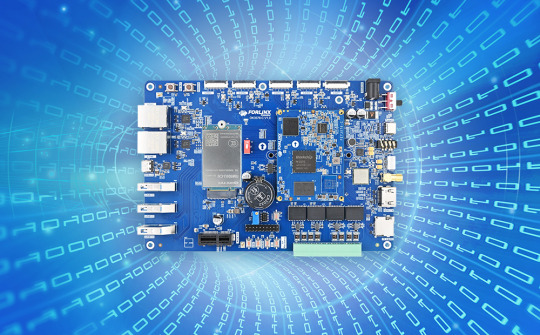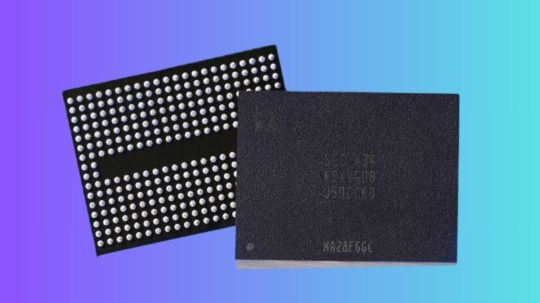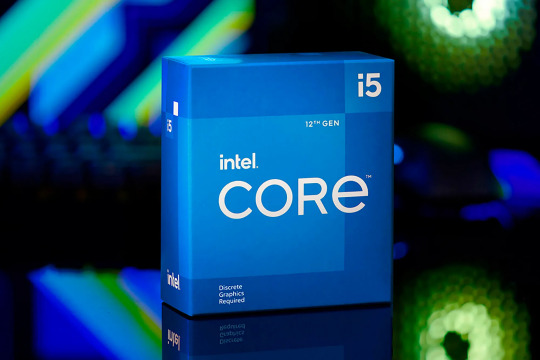#Universal Flash Storage (UFS)
Explore tagged Tumblr posts
Text
Almacenamiento flash universal (UFS), previsión del tamaño del mercado mundial, clasificación y cuota de mercado de las 13 principales empresas
Según el nuevo informe de investigación de mercado “Informe del Mercado Global del Almacenamiento flash universal (UFS) 2024-2030”, publicado por QYResearch, se prevé que el tamaño del mercado mundial del Almacenamiento flash universal (UFS) alcance 2.1 mil millones de USD en 2030, con una tasa de crecimiento anual constante del 6.7% durante el período de previsión.
Figure 1. Tamaño del mercado de Almacenamiento flash universal (UFS) global (US$ Millión), 2019-2030

Según QYResearch, los principales fabricantes mundiales de Almacenamiento flash universal (UFS) incluyen Samsung, KIOXIA, SK Hynix, Western Digital, Micron Technology, Phison, Silicon Motion, Kingston Technology, Shenzhen BIWIN, Yangtze Memory Technology Corp, etc. En 2023, las cinco principales entidades mundiales tenían una cuota de aproximadamente 78.0% en términos de ingresos.
Figure 2. Clasificación y cuota de mercado de las 12 principales entidades globales de Almacenamiento flash universal (UFS) (la clasificación se basa en los ingresos de 2023, actualizados continuamente)

Sobre QYResearch
QYResearch se fundó en California (EE.UU.) en 2007 y es una empresa líder mundial en consultoría e investigación de mercados. Con más de 17 años de experiencia y un equipo de investigación profesional en varias ciudades del mundo, QY Research se centra en la consultoría de gestión, los servicios de bases de datos y seminarios, la consultoría de OPI, la investigación de la cadena industrial y la investigación personalizada para ayudar a nuestros clientes a proporcionar un modelo de ingresos no lineal y hacer que tengan éxito. Gozamos de reconocimiento mundial por nuestra amplia cartera de servicios, nuestra buena ciudadanía corporativa y nuestro firme compromiso con la sostenibilidad. Hasta ahora, hemos colaborado con más de 60.000 clientes en los cinco continentes. Trabajemos estrechamente con usted y construyamos un futuro audaz y mejor.
QYResearch es una empresa de consultoría a gran escala de renombre mundial. La industria cubre varios segmentos de mercado de la cadena de la industria de alta tecnología, que abarca la cadena de la industria de semiconductores (equipos y piezas de semiconductores, materiales semiconductores, circuitos integrados, fundición, embalaje y pruebas, dispositivos discretos, sensores, dispositivos optoelectrónicos), cadena de la industria fotovoltaica (equipos, células, módulos, soportes de materiales auxiliares, inversores, terminales de centrales eléctricas), nueva cadena de la industria del automóvil de energía (baterías y materiales, piezas de automóviles, baterías, motores, control electrónico, semiconductores de automoción, etc.. ), cadena de la industria de la comunicación (equipos de sistemas de comunicación, equipos terminales, componentes electrónicos, front-end de RF, módulos ópticos, 4G/5G/6G, banda ancha, IoT, economía digital, IA), cadena de la industria de materiales avanzados (materiales metálicos, materiales poliméricos, materiales cerámicos, nanomateriales, etc.), cadena de la industria de fabricación de maquinaria (máquinas herramienta CNC, maquinaria de construcción, maquinaria eléctrica, automatización 3C, robots industriales, láser, control industrial, drones), alimentación, bebidas y productos farmacéuticos, equipos médicos, agricultura, etc.
0 notes
Text
What is MicroSD Express?
When Nintendo announced Nintendo Switch 2 Last week, he said consoles only supports spread MicroSD Express cards. The pain is horrible for anyone with existing microSD cards, but it really makes sense – MicroSD Express League is faster. The following cards are able to interface with your device, the UFS (Universal Flash Storage) similar to the Switch 2 repository (universal flash storage) are…
0 notes
Photo

https://datarecovery-edinburgh.co.uk/navigating-the-world-of-emmc-and-ufs-storage/ As smartphones and portable devices continue to evolve, so does the technology behind their storage systems. Two essential components that power these devices are eMMC (embedded MultiMediaCard) and UFS (Universal Flash Storage). Understanding the differences between these storage technologies is crucial, especially when it comes to data recovery services.https://www.youtube.com/watch?v=UcGHLC1iTyYeMMC, with its larger, more traditional BGA packaging, has been widely used in smartphones and other
0 notes
Text
0 notes
Text
UFS (Universal Flash Storage) is revolutionizing embedded storage! 🚀 Simultaneous read/write & dynamic task allocation make multitasking a breeze compared to eMMC. Load games 3x faster than EMMC5.0! RK3576 with UFS2.0: 349 MB/s seq write, 791 MB/s seq read! check out now!

0 notes
Text
0 notes
Text
0 notes
Text
Samsung Latest QLC 9th-Gen V-NAND Advancements Explained

For the AI Age, Samsung Starts the First Industrial Mass Production of QLC 9th-Gen V-NAND.
QLC NAND
The most recent QLC V-NAND incorporates a number of ground-breaking technologies, such as Channel Hole Etching, which allows for the greatest layer count in the double stack structure industry.
- Advertisement -
The first QLC and TLC 9th generation V-NAND in the industry provides the best memory for a range of AI applications.
Today, Samsung Electronics, a renowned memory company, commenced commercial production of its one-terabit (Tb) QLC 9th generation vertical NAND (V-NAND).
Samsung began mass producing QLC 9th-Gen V-NAND after TLC in April, reinforcing its leadership in high-capacity, high-performance NAND flash.
Samsung Electronics Executive Vice President and Head of Flash Product & Technology SungHoi Hur said, “Kicking off the successful mass production of QLC 9th-Gen V-NAND just four months after the TLC version allows us to offer a full lineup of advanced SSD solutions that address the AI era.”
V-NAND SSD
Samsung’s QLC 9th-Gen V-NAND advantages
How to Use: Samsung’s QLC 9th-Gen V-NAND is intended for use in a variety of storage applications, especially those that need dependable and high-density data storage. It is particularly advantageous for:
AI and Machine Learning Workloads: It can store and analyze huge AI datasets thanks to its enormous capacity and fast read/write rates.
Enterprise Data Centers: QLC NAND’s larger capacity and cheaper cost per gigabyte are advantageous for data centers that manage big data, cloud storage, and artificial intelligence processing.
- Advertisement -
Consumer Devices: Customers will benefit from quicker startup times, enhanced application performance, and more room for entertainment and gaming when using high-capacity SSDs in laptops and desktop computers.
Embedded and Internet of Things Devices: QLC V-NAND may be used in embedded systems and other IoT devices because of its durability and small size.
QLC SSD
Samsung’s QLC V-NAND technology drives advancements for the AI and data-driven future by bringing increased efficiency and cost reductions.
Starting with branded consumer goods, Samsung intends to broaden the uses of QLC 9th-Gen V-NAND. These applications will include mobile Universal Flash Storage (UFS), PCs, and server SSDs for clients, including cloud service providers.
Advance technology of QLC 9th-generation V-NAND
Samsung’s QLC 9th-Gen V-NAND combines many advances that have led to advancements in technology:
With a double stack structure, Samsung’s unmatched Channel Hole Etching technique allowed for the greatest layer count in the sector. The area of the cells and the peripheral circuits have been improved using the technical know-how from the TLC 9th-generation V-NAND, yielding an industry-leading bit density that is around 86% greater than that of the QLC V-NAND from the previous generation.
The Word Lines (WL) that operate the cells are spaced differently according to Designed Mold technology, which maintains consistency and optimizes cell properties both between and within layers. With a rise in the number of V-NAND layers, these characteristics have grown in significance. Adopting Designed Mold has increased product dependability by around 20% over earlier iterations in terms of data retention performance.Image Credit To Samsung
To reduce pointless activities, Predictive Program technology predicts and regulates changes in cell condition. Thanks to developments in this field, Samsung’s QLC 9th-Gen V-NAND has doubled write performance and increased data input/output speed by 60%.
By using Low-Power Design, data read and write power consumption was reduced by around 30% and 50%, respectively. By detecting just the required bit lines (BL), this technique cuts power consumption and lowers the voltage that drives NAND cells.
Release Date
Samsung announced mass production of its 9th generation V-NAND with quad-level cell (QLC) technology, a huge advance in AI-driven storage. The announcement was made in mid-2024, and full-scale manufacture is scheduled in Q3. Applications using AI, big data, and cloud computing are predicted to alter dramatically as a result of this.
Pricing
QLC-based NAND is cheaper than triple-level cell (TLC) NAND, although the consumer pricing is unclear.
This trend should be followed by Samsung’s 9th generation V-NAND, which will bring down the cost of high-capacity drives. The storage capacity and whether it is meant for consumer, corporate, or AI applications will determine the pricing, although industry estimates indicate it will be competitively priced in line with existing SSD products, particularly in high capacities like 2TB or 4TB models.
Read more on govindhtech.com
#SamsungLatestQLC#9thGen#VNAND#QLCSSD#AdvancementsExplained#TLC9thgenerationVNAND#SamsungElectronics#artificialintelligence#news#2TB4TBmodels#machinelearning#technology#technews#govindhtech
0 notes
Text
The Growing Power of Mobile Processors: Can They Rival Desktops Now?

The smartphone industry has witnessed phenomenal growth over the past decade. Phones have transformed from simple communication devices to powerful pocket computers, blurring the lines between mobile and desktop computing. A significant contributor to this shift is the relentless advancement in mobile processor technology.
For those considering a career in this thriving sector, there are excellent opportunities available. Institutes like Hitech No1, a leading laptop and mobile repairing institute in Delhi with over 20 years of experience and 3 lakh+ students trained, offer comprehensive mobile repairing courses in Delhi. With a projected shortage of 18 lakh mobile repairing engineers in India, a career in this field can be lucrative, with potential earnings ranging from ₹40,000 to ₹50,000 per month.
Now, let's delve deeper and explore eight key factors that highlight the growing power of mobile processors and their potential to rival desktops:
1. Processing Power:
Mobile processors have undergone a dramatic transformation. Modern flagship SoCs (System-on-Chip) boast multiple cores with clock speeds exceeding 3GHz, rivaling even mid-range desktop CPUs. This processing muscle allows mobiles to handle demanding tasks like video editing, complex gaming, and multitasking with remarkable efficiency.
2. Graphics Performance:
Integrated graphics on mobile processors have come a long way. Technologies like Vulkan and Metal APIs enable them to leverage the hardware efficiently, delivering impressive graphics performance. While high-end desktop GPUs still hold the edge for hardcore gaming, mobile GPUs are more than capable of handling most popular games at decent settings.
3. Improved Memory Management:
LPDDR memory technology has revolutionized memory capabilities in mobile devices. Modern flagship phones come equipped with up to 16GB of LPDDR5 RAM, ensuring smooth multitasking and handling memory-intensive applications effectively. This, coupled with optimized memory management algorithms, allows mobiles to rival desktops in terms of overall system responsiveness.
4. Storage Evolution:
Gone are the days of limited storage on mobile devices. Today, flagship phones boast high-speed UFS (Universal Flash Storage) technology, offering blazing-fast read/write speeds that rival traditional HDDs (Hard Disk Drives) used in desktops. Additionally, the widespread adoption of high-capacity microSD cards provides ample storage space for users with extensive data needs.
5. Battery Efficiency:
Battery life has been a major concern for mobile users, but advancements in processor architecture and power management techniques have significantly improved this aspect. Modern processors are designed to be energy-efficient, allowing flagship phones to deliver a full day's charge or more under moderate usage.
6. Display Technology:
Mobile displays have become stunning marvels of engineering. High-resolution AMOLED and Super AMOLED panels with HDR (High Dynamic Range) support deliver vibrant colors, deep blacks, and exceptional viewing angles, rivaling the visual experience offered by high-quality desktop monitors.
7. Connectivity Options:
Modern mobile processors come equipped with advanced networking capabilities. Flagship phones support cutting-edge technologies like 5G, enabling blazing-fast internet speeds that surpass traditional wired connections on desktops in many scenarios. Additionally, Bluetooth and Wi-Fi connectivity options continue to improve, offering seamless data transfer and device interconnectivity.
8. Software Optimization:
Mobile operating systems have evolved significantly to leverage the capabilities of modern processors effectively. Android and iOS are continuously optimized to handle multitasking, resource management, and application performance with ever-increasing efficiency. This software optimization plays a crucial role in unlocking the true potential of mobile processors.

The mobile processing landscape is constantly evolving. With each generation, mobile processors are closing the gap with their desktop counterparts. While desktops still hold an edge in terms of raw power and upgradability, the convenience, portability, and ever-increasing processing muscle of mobile devices make them a compelling alternative for many tasks. For individuals seeking a career in this dynamic field, institutes like Hitech No1 offer comprehensive mobile repairing course in Delhi, equipping them with the skills to thrive in the ever-growing mobile repair industry.
#The Growing Power of Mobile Processors#Power of Mobile Processors#Power of Mobile Processor#Growing Power of Mobile Processor
0 notes
Text
OnePlus Explains UFS Storage for OnePlus 12R: UFS 3.1 vs. UFS 4.0
The OnePlus 12R, the latest addition to OnePlus’s smartphone lineup, has been a topic of debate lately due to conflicting information about its UFS (Universal Flash Storage) version. In this article, we delve into OnePlus’s official statement and shed light on the storage technology powering the OnePlus 12R. The Initial Confusion When the OnePlus 12R was unveiled, OnePlus touted the Trinity…

View On WordPress
0 notes
Text
The market research industry anticipates the size of the universal flash storage market to reach US$ 4.3 billion by 2023 and US$ 17.8 billion by 2033, and grow at a CAGR of 15.3%. The UFS market is experiencing growth in IoT applications, such as security systems and high-resolution displays, automotive electronics, and gaming consoles.
Companies can contribute to the development of standards by joining the Universal Flash Storage Association. It is estimated that the UFS market will grow significantly in the next few years. In the future, there are expected to be more players entering the market and competition is expected to increase. Non-volatile flash memory chips are used in universal flash storage as a method of storing and retrieving data. For example, Micron Technology offers SSDs and managed NAND flash memory based on UFS, taking advantage of the growing UFS market.
0 notes
Text
0 notes
Text
Universal Flash Storage (UFS): Market with Coronavirus Impact Analysis | also Industry is Booming Worldwide with Key Players | Samsung Electronics, Toshiba Corporation, SK Hynix,, Micron Technology,
Universal Flash Storage (UFS): Market with Coronavirus Impact Analysis | also Industry is Booming Worldwide with Key Players | Samsung Electronics, Toshiba Corporation, SK Hynix,, Micron Technology,
Universal Flash Storage (UFS) Market 2021 this report is including with the COVID-19 Outbreak Impact analysis of key points influencing the growth of the market. Also, the Universal Flash Storage (UFS) Market Profitability Analysis, raw material and supply chain analysis, market entry tactics, recent developments & their impact on the market, prospects of Universal Flash Storage (UFS) Market,…

View On WordPress
0 notes